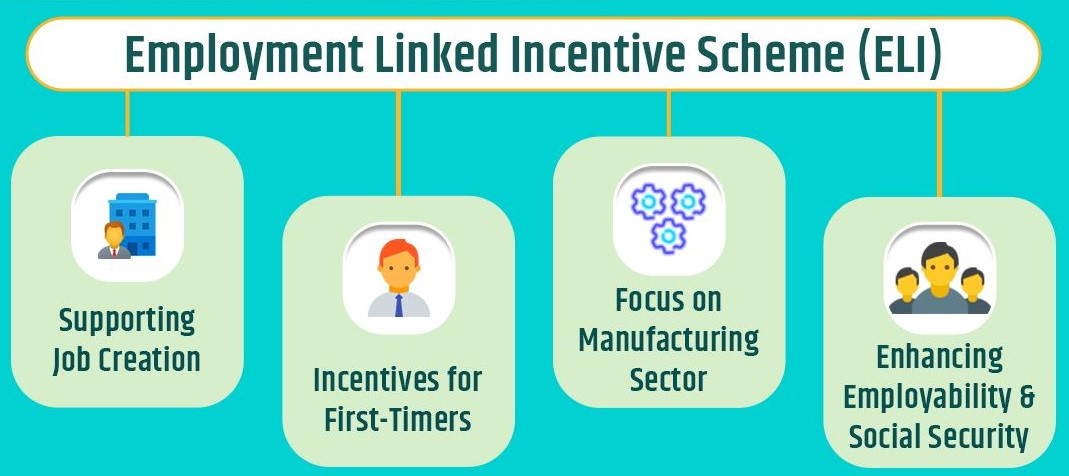Context:
The Union Cabinet has approved the Employment Linked Incentive (ELI) Scheme with an allocation of ₹99,446 crore to support employment generation, primarily in the manufacturing sector.
About the scheme:
The ELI Scheme was announced in the Union Budget 2024-25 as part of PM’s package of five schemes to facilitate employment, skilling and other opportunities for 4.1 Crore youth with a total budget outlay of Rs 2 Lakh Crore.
Objective of the Scheme
- To create over 3.5 crore jobs over two years.
- To provide direct financial support to first-time employees and employers hiring new workers.
- To formalize employment by bringing more workers under EPFO coverage.
- To strengthen manufacturing and labour-intensive industries through extended incentives.

Key Features of the Scheme
Incentive to First-Time Employees: First-time employees will receive one month's wage, up to ₹15,000, in two installments. Employees with salaries up to ₹1 lakh will be eligible.
Conditions to receive the incentive for employee
· Must be employed for at least 6 months to receive the first installment.
· Must complete 12 months of service and a financial literacy programme to receive the second installment.
Support to Employers: Employers will receive incentives for generating additional employment, with benefits extended for up to two years. For the manufacturing sector, incentives will be extended for another two years.
Minimum hiring criteria for employers:
· Employers with fewer than 50 employees must hire at least two additional employees.
· Employers with 50 or more employees must hire at least five additional employees.
The new hires must be retained for a minimum of 6 months.
Eligibility: Jobs created between August 1, 2025, and July 31, 2027, will be eligible for the scheme's benefits.
Incentive Payment Mechanism: Payments to first-time employees will be made through Direct Benefit Transfer (DBT) mode, while payments to employers will be made directly into their PAN-linked accounts.
Benefits and Impact:
· Job Creation: The scheme aims to create over 3.5 crore jobs in two years, with 1.92 crore beneficiaries being first-time employees.
· Employability and Social Security: The scheme will enhance employability and social security across all sectors, with a special focus on the manufacturing sector.
· Formalization of Workforce: The scheme will formalize the country's workforce by extending social security coverage to crores of young men and women.
Conclusion:
The Employment Linked Incentive (ELI) Scheme is a transformative policy tool that blends employment promotion, formalisation, and youth empowerment. It reflects the government's commitment to not only create jobs but to ensure that they are secure, formal, and productive—especially in the manufacturing sector, a key pillar of India’s economic strategy.






